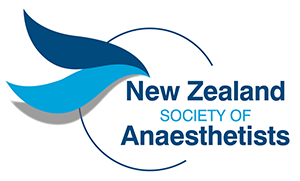Assisted Dying

May 2021
I find it unbelievable that we are approaching the end of May, where is this year going?
I also find it slightly unbelievable that all systems will be in place by 7 November when the End of Life Choice Act
becomes law, a year after the Act was voted for in the referendum.
However, the MOH reassures me in a recent email update that “a functional assisted dying service will be in place to
support the Act and the choice that provides to people” by that date.
So what is the MOH timeline? There are 4 phases.
Phase 1 January to March
Establish the implementation governance groupMade up of:
Deputy Director-General – Health System Improvement and
Innovation – Co-Chair
Deputy Director-General – Māori Health – Co-Chair
Deputy Director-General – System Strategy and Policy
Chief Nursing Officer – Ministry of Health
Chief Medical Officer – Ministry of Health
DHB Chief Executive
Member of the Council of Medical Colleges
Member of Te Apārangi: Māori Partnership Alliance
Implementation begins
Assessment of workforce – Survey
This survey was undertaken in February, there were 1980 responses from Health
Practitioners (doctors, nurses, pharmacists)
47% of respondents supported assisted dying, 30% of respondents indicated they would possibly or definitely be willing
to provide assisted dying servicesThe top areas where survey respondents wanted more information were:
how the process will work end-to-end
training and guidance
support available for clinicians
funding arrangements
Phase 2 April to June
Nominations for statutory bodies: applications for these roles closed on 20 April and selection is now
underway.Support and Consultation for End of Life in NZ (SCENZ) Committee
SCENZ members must represent the range
of professions involved in the Act – medical practitioners, nurse practitioners, psychiatrists, and pharmacists. The
committee will oversee the list of practitioners willing to be involved.End of Life Review Committee
Appointed by the Minister of Health. The Committee will include a medical ethicist, a doctor specialising in end-of-life
care, and one other health practitioner. The role of this committee will be to review each episode of assisted dying to
ensure all was done appropriately.Registrar
Employee of MOH appointed by DG of health
Role to check and ensure compliance with the Act
Service design and planning underway
Planning for workforce Guidance and training
Phase 3 July to September
Statutory committees established
Expressions sort from interested health practitioners to support assisted dying
Systems and process in place to support assisted dying
Workforce training and guidance developed under roll-out
Phase 4 October to November
Final training and guidance for health practitioners developed
Public information on assisted dying is available
Act comes into force 7 November.
Despite this plan, I can’t help feel like I’m in the dark as to what this is going to look like. There still is no
information on who is going to do it, where it’s going to be done, how it’s going to be paid for. My DHB (and
I’m sure it’s similar for others) has been requested not to start planning until the MOH release their
framework. But the need to start coordinating at DHB level is pressing if we are to be ready by 7 November.
And, of course the big question is where do we, as anaesthetists, fit in? I have heard in several forums
reference to our specialty being well placed to administer IV medications, but do we agree?
Potential roles include:
- Conscientious objector or non-participator
- Conscientious participator
- IV insertion
- Attending medical practitioner or independent medical practitioner
- Assessment of suitability
- Administration of medications
Planning and implementation role at your hospital
Governance e.g. SCENZ, or hospital level governance group
Also this article from the UK puts forward an alternative role for anaesthetists at end of
life:https://associationofanaesthetists-publications.onlinelibrary.wiley.com/doi/full/10.1111/anae.15459
In Austin, Victoria (see below) they have a clear pathway for patients coming into the hospital for administration of
IV medications for the purpose of assisted dying. A call is made to the duty anaesthetist, and one of a group
of volunteer SMOs attends to place two IV lines. It is not left to trainees, due to training pressures there
is concern it may not be truly voluntary on their part and they do not want anyone getting involved under duress.
I am hoping that once the statutory committees are established the next step will be engagement with the sector to
thrash out what the service will look like, and we want a seat at that table. As your society we can
only advocate for you if you if we know what you want, so now we need to hear from you!! You will be
receiving a short survey this week, please do take the time to tell us your views on assisted dying in NZ and where
anaesthetists might fit in.
Victoria recently introduced voluntary assisted dying, the first state in Australia to do so. I attended a talk
at the recent ANZCA ASM in which the Austin experience was described. Voluntary Assisted Dying (VAD) was approved in
Victoria in 2017, but not rolled out until two years later in 2019. It is due to become legalised in Western
Australia this year. They have similar criteria to NZ.
> 18 years old with capacity
Must be Australian Resident or Citizen (Must have resided in Victoria for at least a year, to prevent those coming from
out of state to use the service)
Death expected within 6 months, unless neurodegenerative condition then can be 12 months (in NZ it is just the former,
death expected in 6 months)
Experience unbearable suffering that cannot be relieved in a manner that the person considers tolerable
They have clear guidelines on what is deemed sufficient to begin the discussion around VAD, a physician is not
allowed to raise it unless specifically sought by the patient. A patient saying ‘Can you give me all the
options?’, ‘i’m tired of life and just want to die’, ‘Isn’t there something you can do to put an end to all this?’
is not specific enough to be considered a request to talk about VAD. They must say something along the lines
of ‘I would like you to assist me to die’, ‘Can you help me die’. In Victoria, they cannot use email or
telehealth to discuss VAD, it needs to be done in person or via letter, this is logistically challenging and adds
significant time delays. In NZ this will not be an issue, communication is permitted by electronic means.
Only the prescriber knows exactly what the medications and dosages are, and this is likely to be similar to
here. Oral includes antiemetics and a barbituate, IV includes local anaesthetic, benzo, barbiturate and mucle
relaxant. In Victoria you have 7 days to return the drugs to the pharmacy if they are not used. In NZ
the act indicates the drugs must be removed immediatley if they are not used, but how this will work practically is
not yet clear.
At the Austin, they have had between 1 and 11 referrals per month from June 2019 to Feb 2021, with a dip in April to
August last year. Several elements have allowed a successful implentation with low levels of stress and
anxiety for patients and staff:
Extensive program of education to prepare staff and establish a culture of choice
for patients and staff.
Appointment of a VAD program manager that provides support for patients and families, treating teams, partipating
clinicians and adminsitrative support
Getting highly impacted specialties engaged and taking ownership, not just leaving it to palliative care
Referral processes and expert support have ensured treating teams have not been inappropriately divereted into dealing
with VAD
But, not surprisingly several challenges still exist:
Responding to VAD requests takes a lot of time
Finding participating doctors is difficult and expanding the pool of participating ciinicans not easy
VAD adminstration process takes time – set expectation early for those requesting it
Remains a significant and controversial policy requiring practice shift
Each case is unique with it’s own ethical, clinical, practical and emotional issues.
Some summary stats from the Victoria VAD board report (Victoria population 6.81million):
Any feedback or questions, as always, welcome:
Do you have a question for the MOH?
Email:
If you would like regular updates from the MOH on the EOLC Act roll out you can request it
here: https://www.health.govt.nz/our-work/regulation-health-and-disability-system/end-life-choice-act/end-life-choice-act-updates
Until next time,
Ngā mihi,
Sheila Hart



